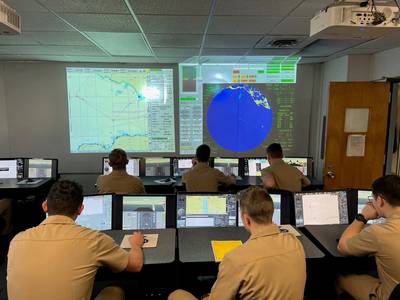Critical Thinking Matters on the Bridge
One of the most important skills a ship’s officer should possess is their ability to recognize when something is out of place. If you don’t apply a lot of thought to what you are doing, recognizing your mistakes becomes nearly impossible. Thought is required in every step of every process performed on the bridge.
With all the modern appliances we use for navigation and collision avoidance today, it is very easy to fall into the trap of being reactive to the wishes of the machines without giving much thought to the outcome of our actions. As instructors, we need to constantly reinforce the role that critical thinking plays in our profession. We need to ensure that our students understand that the way the process should always work is that the equipment is there to support their decision-making process not the other way around.
The process 30 years ago was much different than it is today. We manually plotted other ships on our RADAR screen with a grease pencil. We drew course lines on paper charts. Corrections to paper charts were applied by hand. We calculated course, distance and our time of arrival. Our position was something we worked out, not something that we were told. Time was also something we were much more aware of. We calculated the time of sunrise, sunset and local apparent noon. We were much more in tune with the movement of the sun, stars and planets because we used them to fix our position every day. Technology has transformed bridge watchstanding into a much more passive activity. We spend more time observing equipment than being actively engaged in the process, and this breeds complacency.
As we train the next generation of mariners, we need to ensure that their understanding of the equipment goes beyond what buttons to press. Just as important is how we interpret the data as it’s presented to us. We should always emphasize that the output we receive from any machine is based on the input. Just because you see something on a RADAR or an ECDIS screen does not make it the absolute truth. These machines have a variety of input devices that can be subject to error or require additional analysis by the user. An example of this would be speed input. Using speed over ground or speed through the water as an input can in some cases significantly change the output of your ARPA. Even if both inputs are 100% accurate, they represent two different conditions that can alter the output. Failure to take this into consideration can lead to an inaccurate interpretation of the data as displayed.
Teaching the knobology to our students is normally quite easy. Our students have grown up in a world of computers, tablets and smart phones. The operator segment is rarely a problem. This allows us to spend the bulk of our time looking at the details of how the equipment is set up. In all of our labs the students will spend almost as much time setting up the equipment as they spend underway. Students are required to look at all inputs and ensure they are properly set for the current conditions. They examine the satellite geometry of the GPS in order to determine its level of accuracy.
They will determine what information is displayed as well as the alarm settings. The students are observed by the instructor as they set up the equipment and throughout the underway portion of the exercise. The student’s final evaluation isn’t just based on the success of the voyage, the efficiency of how they used the equipment is just as important. By requiring this level of set up each time, the hope is that it will force the students to assume a more active role and get them into the habit of constantly thinking about whether or not the current display settings are giving them all the information they require. Programming the equipment every time they use it gives them ownership; it forces them to think.
When I teach collision avoidance, I require the students to tell me what they think the new course is before they work it out on paper or perform a trial maneuver on the ARPA. My goal is to get them into the habit of thinking about it prior to the calculation, that way if they make a mistake it will be much easier to recognize. Think before you execute.
The question we should constantly ask ourselves is, am I using this equipment in order to make an informed decision, or am I blindly following its direction? If we are not fully engaged in the decision-making process, then we can never recognize when something isn’t right. Technology does not relieve us of our responsibility to think.
As published in the April 2023 edition of Maritime Reporter & Engineering News
About the Author Captain John Ryan Holds an Unlimited Masters License. He has sailed on commercial, military and training vessels. He currently teaches Navigation and Collision Avoidance at the United States Merchant Marine Academy.
Captain John Ryan Holds an Unlimited Masters License. He has sailed on commercial, military and training vessels. He currently teaches Navigation and Collision Avoidance at the United States Merchant Marine Academy.
Disclaimer
The views expressed in this presentation are my own and do not necessarily represent the views of the U.S. Merchant Marine Academy, Maritime Administration, the U.S. Department of Transportation, or the United States.











